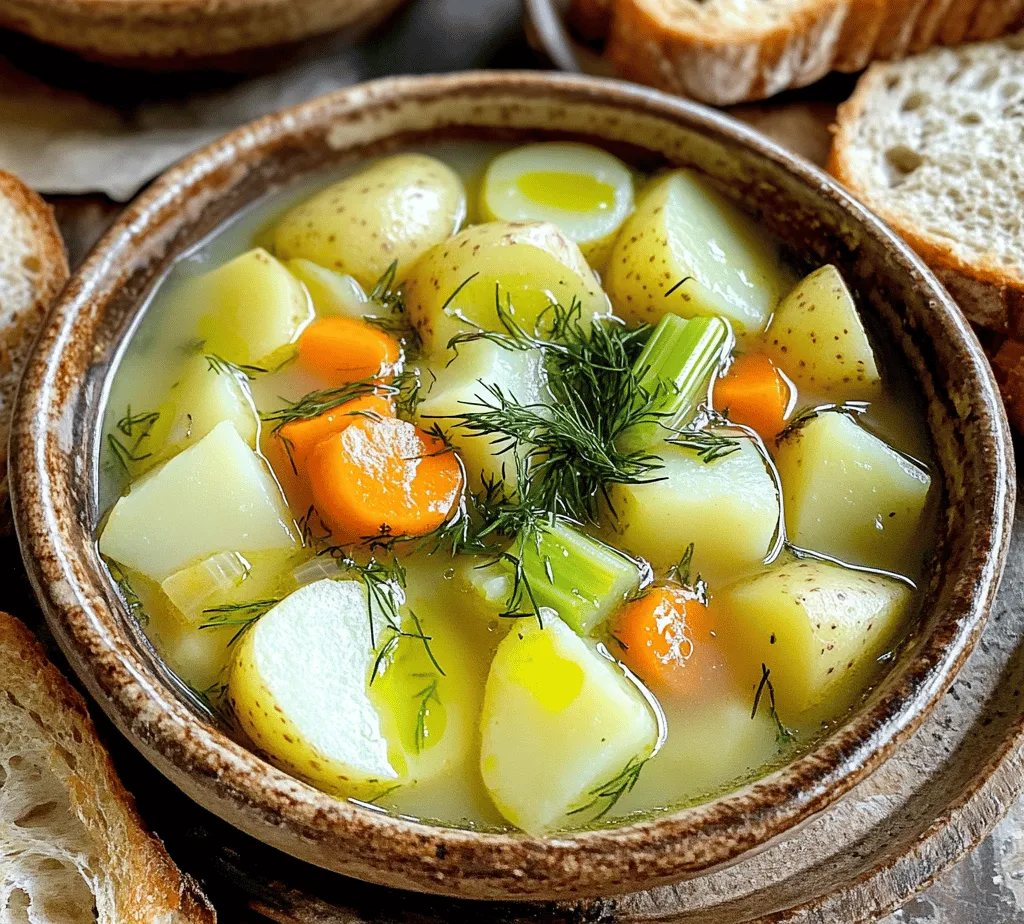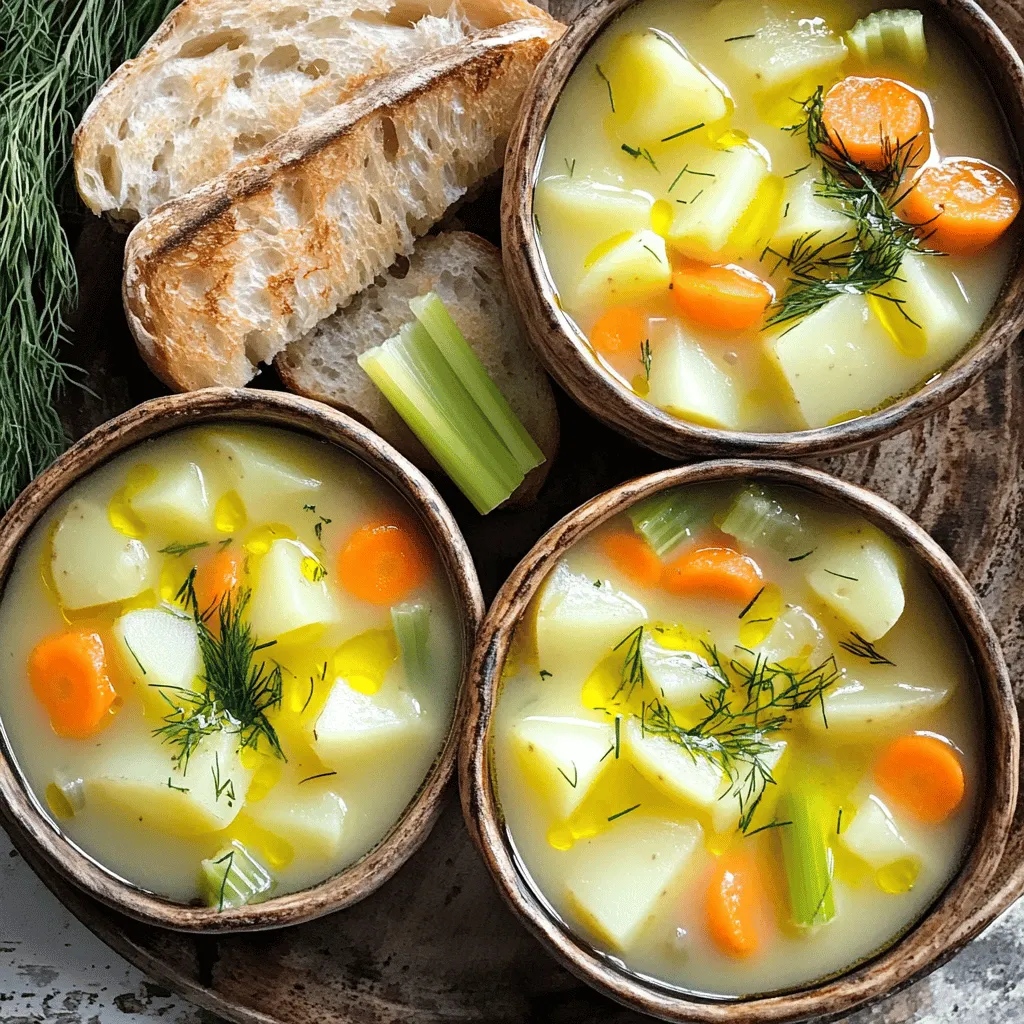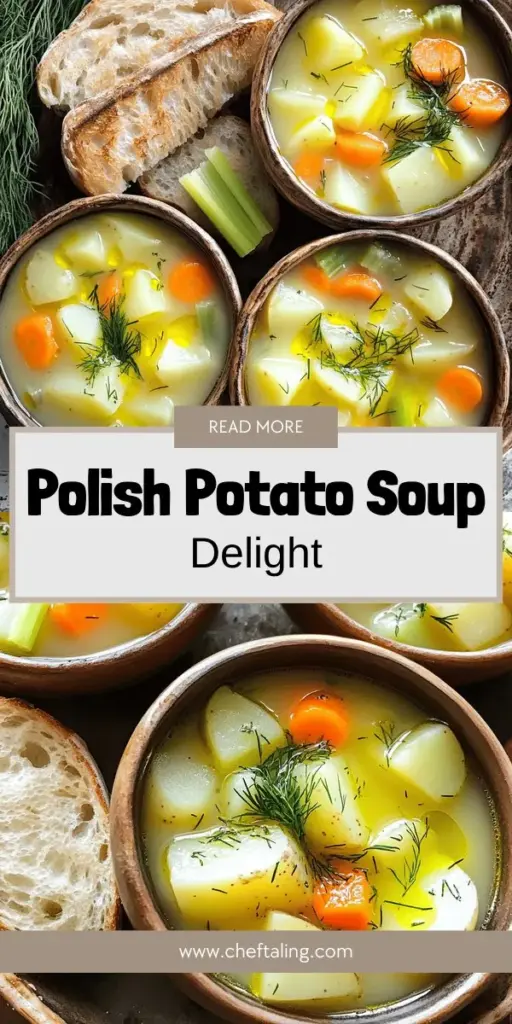Introduction
Polish cuisine is renowned for its hearty and comforting dishes that reflect the rich agricultural traditions and cultural heritage of the country. With an emphasis on wholesome ingredients, Polish meals often feature root vegetables, grains, and meats, making them perfect for family gatherings and cold winter nights. One such classic dish that embodies the comfort and warmth of Polish cooking is Kartoflanka, a traditional potato soup that has stood the test of time.
Kartoflanka holds a special place in Polish households, cherished for its simplicity and versatility. This creamy soup, primarily made from potatoes, is not only filling but also economical, making it a favorite among families. The essence of this dish lies in its humble ingredients and the warmth it brings to the table. When the cold winds blow outside, there’s nothing quite like a bowl of Kartoflanka to nourish the body and soul, often enjoyed as part of a cozy family meal or during festive gatherings.
Potatoes, the star ingredient of Kartoflanka, are a staple in Polish cooking. These versatile tubers are celebrated for their ability to absorb flavors and provide a creamy texture when cooked, making them ideal for soups and stews. In Poland, potatoes are more than just a food item; they are intertwined with the country’s culinary identity, symbolizing sustenance and warmth. This recipe not only showcases the humble potato but also elevates it into a comforting dish that everyone can enjoy.
Understanding Kartoflanka: The Heart of Polish Comfort Food
Kartoflanka is deeply rooted in Polish history, with its origins tracing back to the rural kitchens of the past. It is a dish that embodies the spirit of Polish home cooking, often made with whatever ingredients were available at the time. Historically, potato soup was a way to use up leftover vegetables and provide a hearty meal for families, particularly during the harsh winters.
Over the years, Kartoflanka has evolved, with regional variations emerging across Poland. In some areas, cooks might add local ingredients such as smoked meats or different herbs, while others may prefer a more straightforward approach. Regardless of the variations, the core of Kartoflanka remains the same: a delicious, potato-based soup that comforts and nourishes.
In addition to its rich history, Kartoflanka boasts several nutritional benefits. Potatoes are an excellent source of vitamins C and B6, potassium, and dietary fiber. When combined with other vegetables like onions, carrots, and celery, this soup becomes a wholesome meal, packed with nutrients that support overall health. The inclusion of fresh herbs not only enhances the flavor but also contributes additional vitamins and minerals, making Kartoflanka a well-rounded dish.
Ingredients Breakdown
Creating a delicious pot of Kartoflanka requires a few essential ingredients, each contributing to the soup’s unique flavor and texture. Below is a detailed breakdown of what you’ll need to make this heartwarming dish.
Russet Potatoes
At the heart of Kartoflanka are russet potatoes, known for their starchy content and fluffy texture when cooked. These potatoes are ideal for soups due to their ability to break down and create a creamy consistency. When making Kartoflanka, it’s essential to choose high-quality russet potatoes, as they will significantly impact the soup’s overall taste and texture.
Onion, Carrots, and Celery
The flavor base of Kartoflanka is built on a classic combination known as mirepoix, which includes onions, carrots, and celery. This trio of vegetables adds depth and sweetness to the soup. Onions provide a savory base, while carrots add a hint of natural sweetness, and celery offers a subtle earthiness. When sautéed together, these ingredients create a fragrant foundation that enhances the overall flavor profile of the soup.
Garlic
Adding garlic to the mix elevates Kartoflanka by introducing a robust aroma and flavor. Garlic is known for its health benefits, including anti-inflammatory properties and the ability to boost the immune system. Sautéing garlic with the mirepoix ensures that its flavors are released and absorbed into the soup, creating a rich and aromatic base.
Vegetable Broth
The broth is the liquid component of Kartoflanka, providing moisture and richness to the dish. You can opt for either homemade vegetable broth or store-bought versions, depending on your time and preference. Homemade broth allows for greater control over the flavors and ingredients, while store-bought options offer convenience. Whichever you choose, ensure that the broth is low-sodium, as this will allow you to better control the seasoning of the soup.
Bay Leaf and Thyme
To enhance the aroma and flavor of Kartoflanka, bay leaves and thyme are essential additions. The bay leaf infuses the soup with a subtle herbal note, while thyme adds a warm and earthy flavor. These herbs work together to create a fragrant backdrop that complements the potatoes and vegetables beautifully. Remember to remove the bay leaf before serving, as it is not meant to be eaten.
Cream
For those who enjoy a richer, creamier texture, adding cream to Kartoflanka is a delightful option. You can use heavy cream for a luxurious finish or opt for lighter alternatives like half-and-half or even coconut milk for a dairy-free version. The cream rounds out the flavors and adds a velvety mouthfeel to the soup, making it even more satisfying.
Fresh Dill
The finishing touch for Kartoflanka is fresh dill, a herb that brightens up the dish with its refreshing flavor. Dill pairs exceptionally well with potatoes, adding a touch of brightness that balances the creaminess of the soup. When garnishing the soup, sprinkle a generous amount of chopped fresh dill on top to enhance both presentation and flavor.
Step-by-Step Cooking Instructions
Now that you have a thorough understanding of the ingredients that come together to create Kartoflanka, let’s dive into the cooking process. Follow these step-by-step instructions to prepare this comforting Polish potato soup.
Sautéing the Vegetables
Begin by preparing your vegetables. Peel and dice the russet potatoes into bite-sized pieces, and set them aside. Chop the onion, carrots, and celery into small, uniform pieces to ensure even cooking. In a large pot or Dutch oven, heat a tablespoon of olive oil or butter over medium heat.
Once the oil is hot, add the diced onions and sauté for about 2-3 minutes until they become translucent. Next, add the chopped carrots and celery, stirring frequently. The key to a flavorful soup is to sauté the vegetables until they are tender and fragrant, which typically takes another 5-7 minutes. This process allows the natural sugars in the vegetables to caramelize slightly, enhancing the depth of flavor in the soup.
Importance of the Sautéing Process and How It Impacts Flavor
The sautéing process is critical in developing the flavor profile of Kartoflanka. By cooking the mirepoix (onions, carrots, and celery) together, you create a rich base that forms the foundation of the soup. This technique also helps to release the natural flavors and aromas of the vegetables, allowing them to meld together harmoniously. Skipping this step may result in a less flavorful soup, so take your time to ensure the vegetables are sautéed to perfection.
Adding Garlic and Spices
Once the mirepoix is tender and aromatic, it’s time to add the minced garlic. Sauté the garlic for an additional 1-2 minutes, stirring frequently to prevent it from burning. Garlic cooks quickly, and its flavor can become bitter if overcooked. After the garlic is fragrant, sprinkle in the dried thyme and add the bay leaf, stirring to combine. This will allow the spices to release their essential oils, further enhancing the flavor of the soup.
Next, introduce the diced russet potatoes to the pot, stirring to coat them with the sautéed vegetables and spices. This step allows the potatoes to absorb the flavors of the mirepoix and garlic, setting the stage for a deliciously rich soup.
As you continue cooking, gradually pour in your vegetable broth, ensuring that all the ingredients are submerged. Bring the mixture to a gentle boil, then reduce the heat to a simmer. Allow the soup to cook for approximately 20-25 minutes or until the potatoes are fork-tender and easily break apart.
By following these initial steps, you set the groundwork for a delicious bowl of Kartoflanka, ready to be finished with cream and fresh herbs. The careful preparation and cooking methods are crucial in achieving the authentic flavors that make this Polish potato soup a beloved comfort food.



